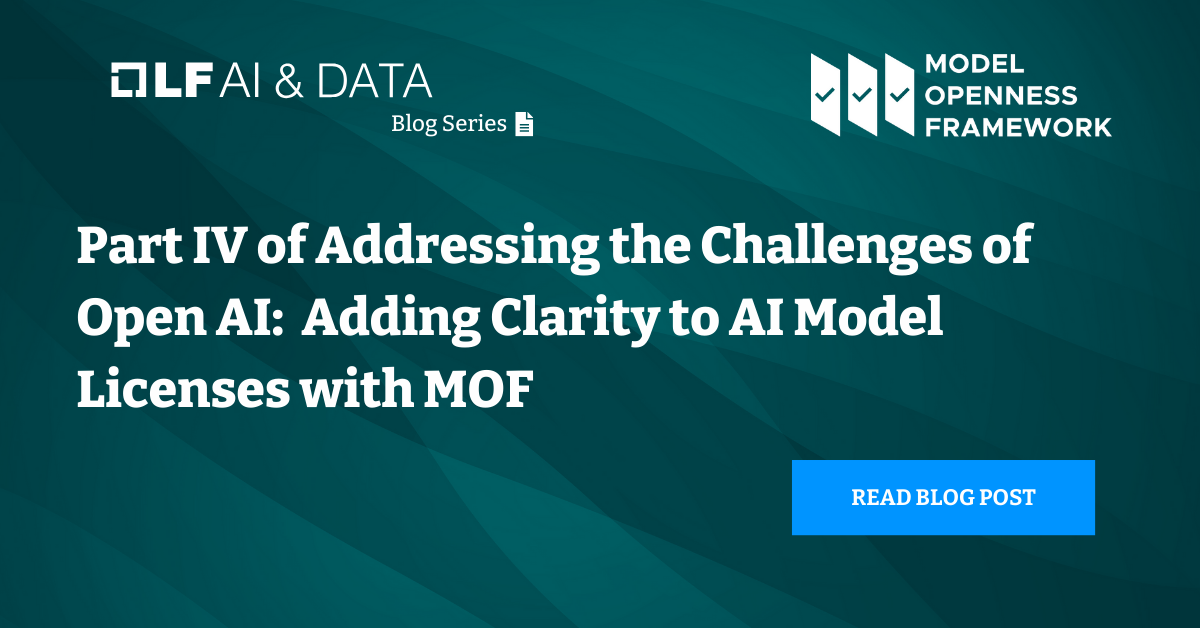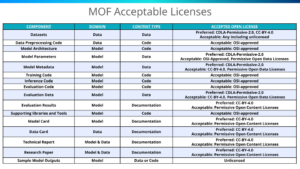
In the rapidly evolving world of artificial intelligence, licensing implications often create confusion among developers, companies, and end-users. Misunderstandings about what these licenses permit and restrict can lead to legal challenges and hinder the advancement and sharing of AI technologies. In this installment of our series, we delve into the common misunderstandings regarding license implications for AI models and explain how the Model Openness Framework (MOF) and the Model Openness Tool (MOT) can help clarify these issues.
Common Misunderstandings About AI Model Licenses
- One Size Fits All: A prevalent misconception is that a single license can cover all aspects of an AI model — from the data and algorithms to the software and derived models. In reality, different components of an AI model may require different types of licenses, each with its own set of permissions and restrictions.
- Freedom to Operate: Many believe that open-source licenses grant the freedom to use, modify, and distribute AI models without constraints. However, most open-source licenses have conditions and obligations that must be met, such as attribution requirements or restrictions on commercial use.
- Derivative Works: There is often confusion about what constitutes a derivative work in the context of AI models. Modifying an AI model’s code or training an AI model with new data can create derivative works, which may be subject to the original license’s terms.
The Role of the Model Openness Framework (MOF)
The Model Openness Framework (MOF) offers a detailed and structured approach to evaluating AI models, considering not just ethical and regulatory compliance but also licensing transparency. This clarity is essential for users and developers to understand the legal implications of using, sharing, or modifying an AI model.
The MOF Acceptable Licenses table below specifies standard open licenses recommended for releasing components in each category, while allowing some flexibility for equivalent licenses.

By providing a comprehensive scope, the MOF encourages opening the entire pipeline that produces, evaluates, and applies a model. This approach offers multiple perspectives into the model’s inner workings, promoting transparency and reproducibility in open model development.
The Role of the Model Openness Tool (MOT)
Building on the principles of the MOF, the Model Openness Tool (MOT) provides a practical solution for applying the framework. offers a practical way to apply the framework. MOT enables users and developers to assess the openness and licensing status of AI models by generating a detailed score. This score reflects how well a model meets the MOF criteria, including transparency, fairness, and legal compliance.
Get Involved
The complexities of AI licensing are a significant barrier to the widespread adoption and ethical use of artificial intelligence. By addressing the common misunderstandings surrounding these issues, the Model Openness Framework and the Model Openness Tool help pave the way for more responsible, innovative, and collaborative AI development.
Get involved with MOF today and help shape the future of responsible AI development. By participating, you contribute to a movement that emphasizes transparency and equity in AI technologies.
- Explore the Model Openness Tool here
- Explore the full Model Openness Framework here
- Join the Generative AI Commons community and mailing list here
- Advocate for the use of MOF in your organization and network
The next blog will discuss the common misunderstandings regarding license implications for AI models.
LF AI & Data Resources
- Learn about membership opportunities
- Explore the interactive landscape
- Check out our technical projects
- Join us at upcoming events
- Read the latest announcements on the blog
- Subscribe to the mailing lists
- Follow us on Twitter or LinkedIn

